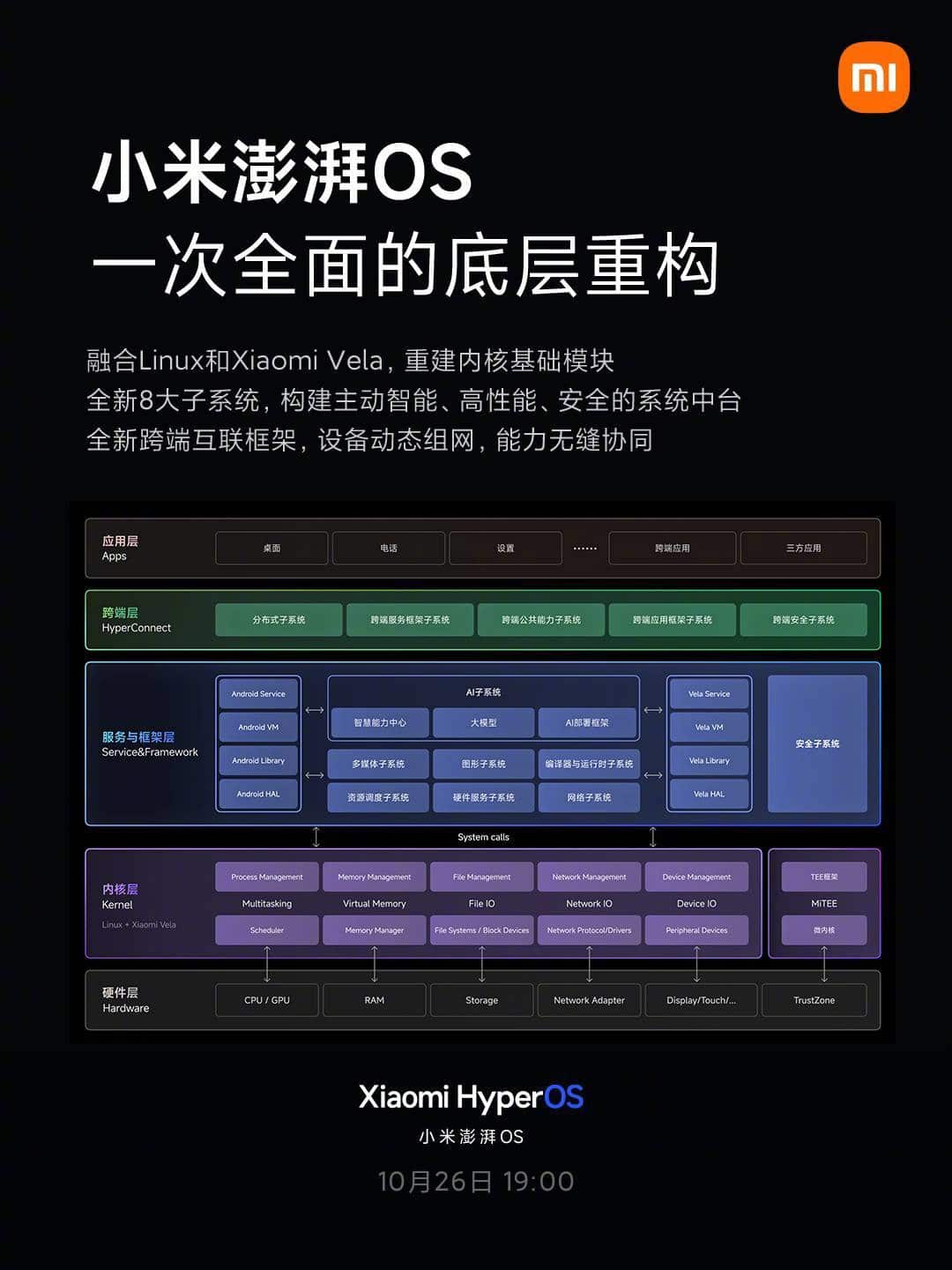On October 26, Xiaomi made an official announcement regarding HyperOS, rapidly providing a comprehensive insight into the system’s architecture to enhance everyone’s understanding.
Xiaomi CEO Lei Jun wrote a detailed article about HyperOS’s architecture. Thousands of engineers have worked on it for 13 years since Xiaomi’s beginning. He explained the system architecture of HyperOS, created by these engineers.
Xiaomi’s HyperOS is a massive engineering project. They had four main goals when designing it:
- Achieve strong single-ended performance.
- Empower AI to serve as the ecosystem’s “intelligent brain.”
- Enable convenient and efficient connections.
- Establish robust privacy and security safeguards.
Xiaomi integrated its self-developed Vela system kernel into a modified Linux system kernel at the lowest layer. They restructured foundational modules, improving performance and efficiency. This core supports over 200 processor platforms and 20+ file systems, ensuring optimal device performance.
Above the system kernel, Xiaomi integrated Android’s service framework and their self-developed Vela system’s service framework as “middleware.” They introduced eight new subsystems, with the AI subsystem being a standout feature.
The uppermost HyperConnect cross-end layer eliminates barriers between hardware devices, enabling unified connection protocols and real-time communication, creating a networked ecosystem.
Xiaomi established an end-to-end security system across the kernel layer, service framework layer, and cross-end layer. Notably, they introduced a “self-developed microkernel security system” at the kernel layer to ensure deep-level security.

